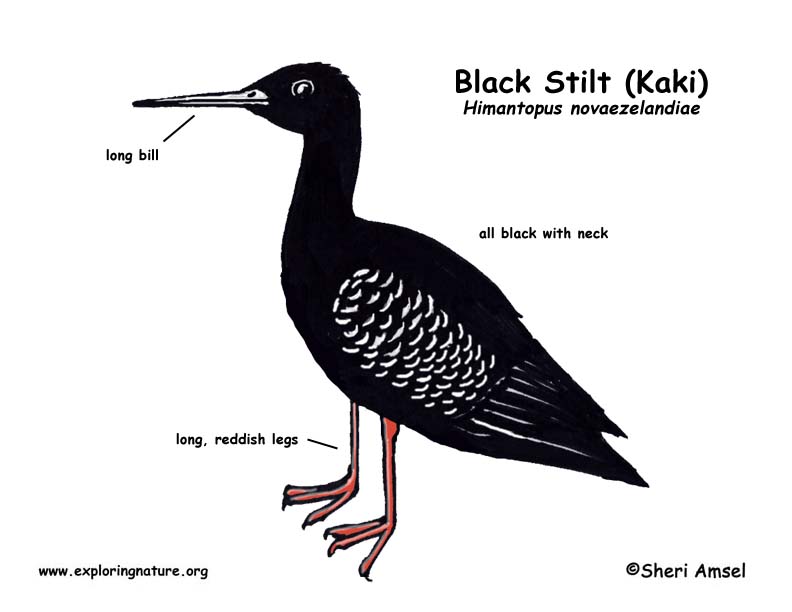

They are found only in New Zealand. They are very endangered and are found only in South Canterbury.
They live in wetlands and along rivers and lakes.
They are all black with long, red legs. They have a long, black bill.
They wade out into the water to feed on the bottom. They are preyed on by rats, weasels (stoats) and cats, which were introduced to New Zealand. They are very endangered.
They eat small fish, squid and clams and water bugs.
They nest alone near the water. They mate for life (monogamous). Both male and female warm the eggs (incubate) and defend the nest from predators. The eggs and the hatching chicks blend in well with their habitat.
Domain: Eukarya
Kingdom: Animalia
Phylum: Chordata
Subphylum: Vertebrata
Class: Aves
Order: Charadriiformes
Family: Recurvirostridae
Genus: Himantopus
Species: H. novaezelandiae
When you research information you must cite the reference. Citing for websites is different from citing from books, magazines and periodicals. The style of citing shown here is from the MLA Style Citations (Modern Language Association).
When citing a WEBSITE the general format is as follows.
Author Last Name, First Name(s). "Title: Subtitle of Part of Web Page, if appropriate." Title: Subtitle: Section of Page if appropriate. Sponsoring/Publishing Agency, If Given. Additional significant descriptive information. Date of Electronic Publication or other Date, such as Last Updated. Day Month Year of access < URL >.
Amsel, Sheri. "Kaki (Black Stilt)" Exploring Nature Educational Resource ©2005-2024. December 13, 2024
< http://www.exploringnature.org/db/view/Kaki-Black-Stilt >

